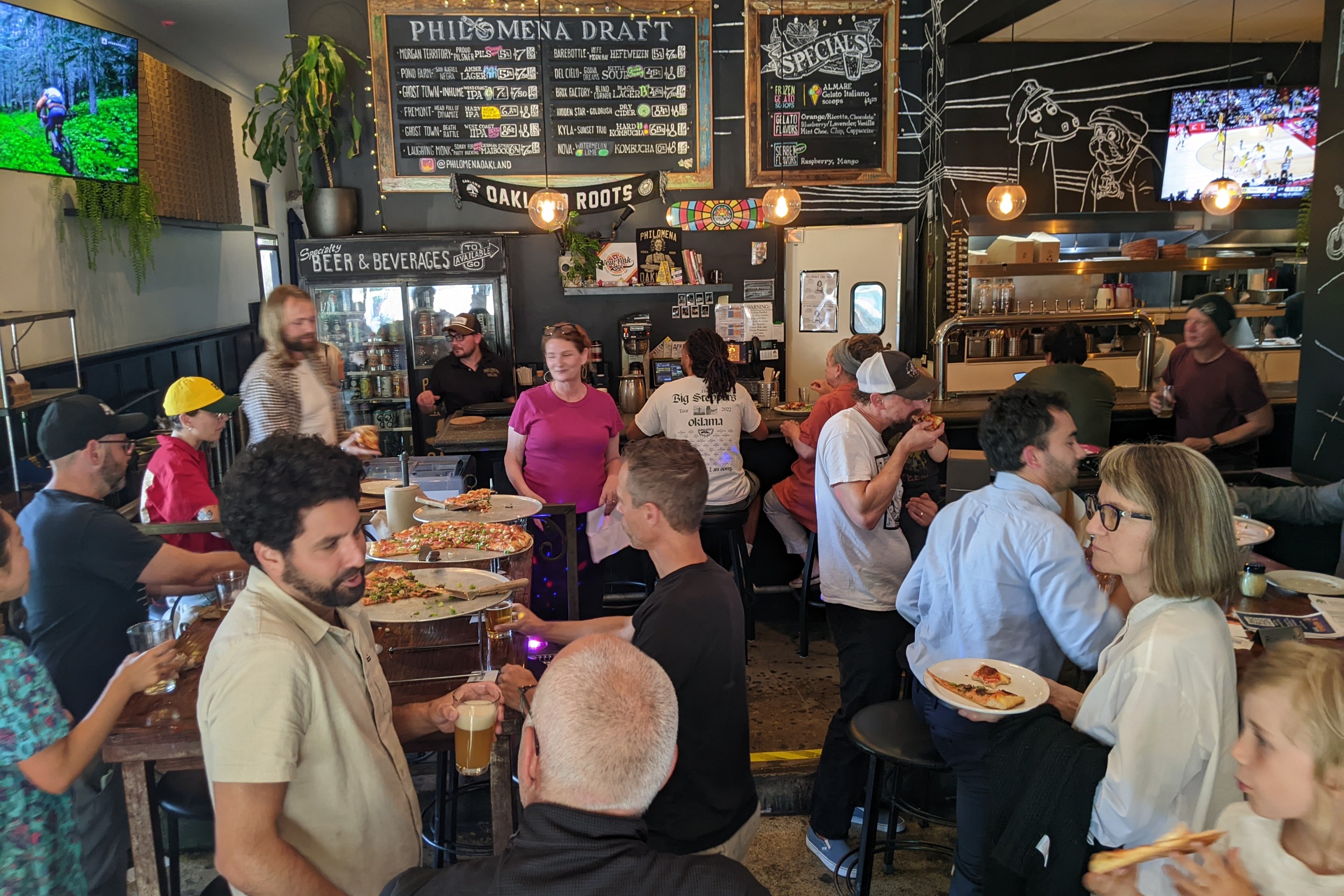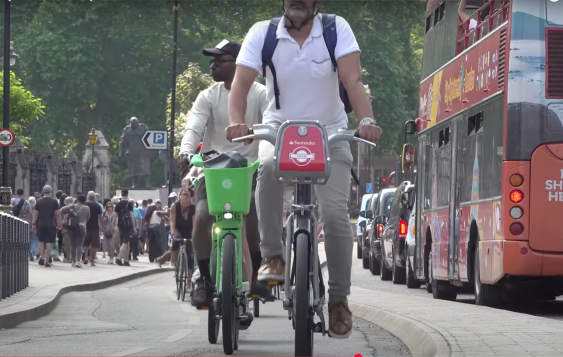 Enjoying a car-free Grant Avenue at Noodle Fest. Photo: Michael Rhodes
Enjoying a car-free Grant Avenue at Noodle Fest. Photo: Michael RhodesCould San Francisco's first and oldest thoroughfare become the city's first true pedestrianized street?
Since the day in 1835 when William Richardson drew the first map of Yerba Buena that included just one street, called "Calle de la fundacion" -- Foundation Street, which ran along the lines of present-day Grant Avenue, the city's oldest street has gone through several transformations. First, it was renamed Dupont Street, in 1847, then Grant Avenue, in 1886. But the coup de grâce to the old Calle de la fundacion was the 1906 earthquake, which leveled everything but the hills.
On a bright afternoon last Sunday, less than a block from where Richardson first made his home in 1835 near Grant and Washington Street, there were signs Grant might be ready for another transformation. This time, the center of the transformation was not fire or renaming, but noodles.
Thousands of people packed into a few blocks of Grant Avenue where it intersects Broadway, the traditional boundary between Chinatown and North Beach. Noodle Fest 2010, put on by the Chinatown Community Development Center and the North Beach Merchants Association, sought to bridge two neighborhoods that four lanes of traffic on Broadway have long kept apart.
Merchants reaped the benefits of a lot of extra exposure, while everyone got a tantalizing look at what a pedestrianized Grant Avenue could look like.
"For the merchants who participated in Noodle Fest, they were extremely happy to see all the attention their restaurant received by so many people who hardly venture into either neighborhood," said CCDC's Vivian Chang, who helped organize the event.
 Click to enlarge: An artist's rendering of what a car-free Grant Avenue could look like. Image: Urban Ecology
Click to enlarge: An artist's rendering of what a car-free Grant Avenue could look like. Image: Urban EcologyGrant Avenue is a frequent site for street festivals, including the Autumn Moon Festival and the North Beach Festival. Even on regular days, the narrow street is packed with pedestrians on its skinny sidewalks. Chang said Sunday's event highlighted the potential for a permanent closure to vehicles.
"The transformation of upper Grant [Sunday] was an exciting sight to behold, which brought so many pedestrians to Chinatown and North Beach. I would venture to say that a permanent closure is now closer than ever before, since surrounding businesses themselves saw an increase in their revenue within [Sunday's] event."
It wasn't hard to find people on the street that felt the same way.
"It's hard to go a step without bumping into someone else" on Grant Avenue, said David Yao, who works near Chinatown and was visiting Noodle Fest. Closing part or all of Grant to traffic would make it easier to just have "a nice stroll on a Sunday afternoon," he added.
Michael Reilly, a researcher at the Association of Bay Area Governments and a former urban economics lecturer at Stanford and UC Berkeley, was also out enjoying Noodle Fest. To Reilly, Grant Avenue is the best candidate in the city for pedestrianizing.
"Recently, I've actually been thinking a lot about Grant as the best street to close in San Francisco," said Reilly. "If you were going to pick one to close to traffic, this might be the very best one in a practical sense, because Market is not busy enough. There's really not enough pedestrian traffic, especially after 6 o'clock."
"There's a lot of potential, and it links really nicely with Yerba Buena [Center for the Arts]."
 Grant Avenue's narrow right-of-way has always lent itself to intimate street festivals. This one occurred in 1885. Image: San Francisco Public Library
Grant Avenue's narrow right-of-way has always lent itself to intimate street festivals. This one occurred in 1885. Image: San Francisco Public LibraryThere are other signs of pedestrian-oriented streets gaining steam in Chinatown and North Beach, including plans for a pedestrian plaza on Vallejo between Grant and Columbus, survey results showing strong demand for more open space, pedestrianized alleys across Chinatown, and even some enticing drawings by Urban Ecology of what a pedestrianized Grant could look like, on both sides of Broadway.
CCDC's Chang said pedestrianizing Grant Avenue is still a dream at this point, but could be worth working towards.
"It is definitely going to take a lot of effort to continue these types of street closures to acclimate merchants to this idea, but in this economy, perhaps it is time to think of pedestrianizing streets like Grant Avenue as a means to jumpstart the local businesses," she said.
Sunday Streets is also helping merchants and neighbors get used to the idea of street closures, but as Chang notes, pedestrian-oriented street fairs make a very explicit connection between economic development and pedestrian traffic.
 Sai Yeung Choi Street, a car-free shopping street in Hong Kong. Image: Wikipedia
Sai Yeung Choi Street, a car-free shopping street in Hong Kong. Image: WikipediaThe best model for opening Grant Avenue entirely to pedestrians could come from another seaside city with plenty of Cantonese speakers: Hong Kong. There, streets like Sai Yeung Choi Street are pedestrian refuges and shopping hot spots.
But when Noodle Fest ended, things went back to normal on Grant Avenue -- tons of people crowded onto narrow sidewalks, while two lanes of traffic and a parking lane hogged most the narrow corridor between the street's buildings.
Transbay Blog's Eric Chase wasn't sure how hopeful he felt about the prospects for pedestrianizing Grant. "This is San Francisco, after all!" he pointed out. But like many of the other people at Noodle Fest, he couldn't help but think it would be nice.





